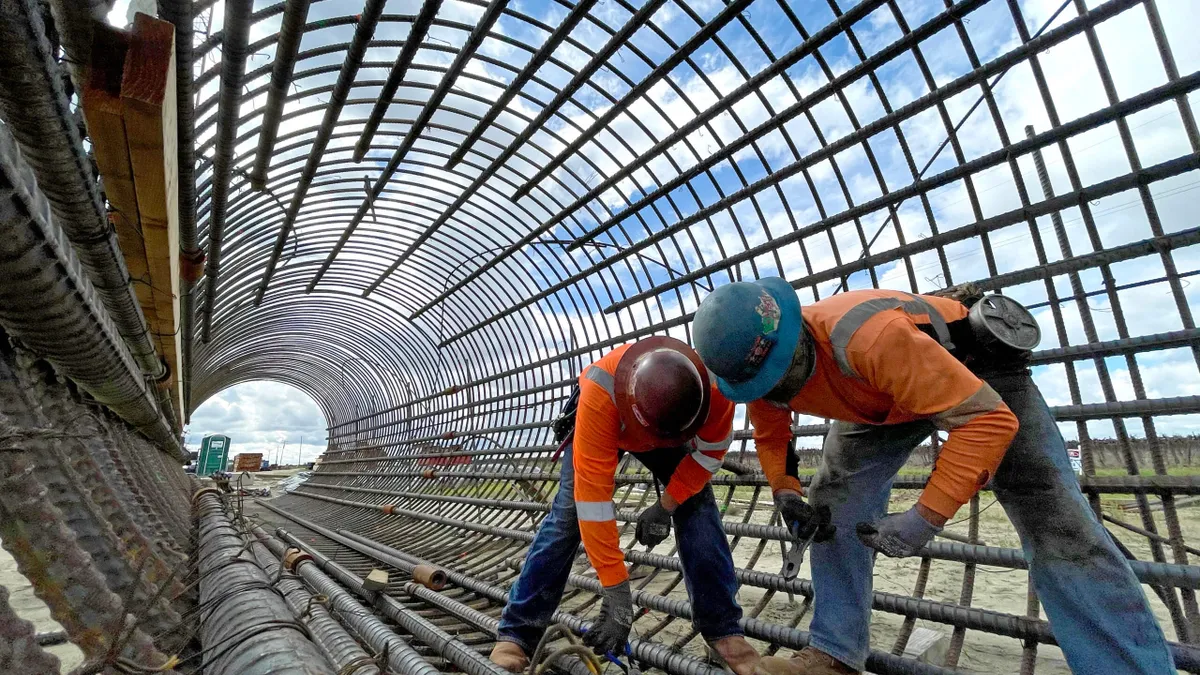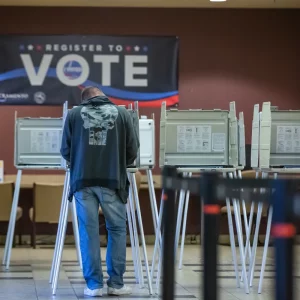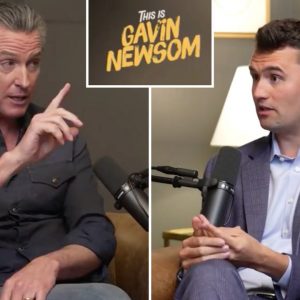California’s High-Speed Rail project seems to be in a state of perpetual limbo. Historically, progress on this project has been very slow, with local politics preventing its route from being efficient. Additionally, budget problems mean it won’t be finished anytime soon. To compound the problems the potential rail line already faces, because of the project’s having been attacked by a wealthy industrialist who is now poised to take part in the next executive branch of the federal government, it seems increasingly less and less likely that the future is bright for high-speed rail in California.
What is the California High-Speed Rail Project?
The California High-Speed Rail Project (or CAHSR), would change what it means to commute in California. Planned since 1996 and approved by voters in 2008, the project finally broke ground in 2015, Once completed, the project would connect the two major urban centers of San Francisco and Los Angeles in just two hours and 40 minutes. This blisteringly quick speed, on par with systems in Europe and Asia, wouldn’t just be faster than current options (it currently takes about six hours to drive that distance, and over 12 hours to travel it by existing Amtrak rail lines). It would mean a rail connection about as fast as flying from LAX to SFO.
CAHSR would also help alleviate current strains on the roadway system and would serve as a greener model of intrastate transportation than existing modes of transit. The existence of a fast, effective alternative to flying would disincentivize short-haul plane trips, which studies show are among the most polluting of all methods of getting around. A train would simply be a greener option for a faster trip across California that could strengthen our economy.
However, CAHSR is still nowhere near completion, despite an initial completion date of 2020. Additionally, the project has faced many other issues, including some local pushback and cost overruns. Indeed, 11 billion taxpayer dollars have already been spent on the project, with many tens of billions in spending left to go before the rail line is finished. Additionally, pork-barrel funding has plagued the project throughout its development. The original 2008 plan only required that CAHSR connect LA and SF, and that it go through at least one of four “corridors” between other large cities in the state. It didn’t require that all of the corridors be part of the line.
The most efficient route for CAHSR (per its original plan) would’ve cut through California’s Coast Ranges. However, the rail’s path now diverts through the major Central Valley cities of Fresno and Bakersfield. And more recently, the cities of Palmdale and Lancaster have been using financial incentives to get the rail to divert through their area, as well. As a key stop on the CAHSR, this pair of cities would gain increased economic relevance and possibly grow in size. However, every new diversion creates an additional cost for the project, and more diversions also drive up the total travel time, which lowers utility. And so continuing to change CAHSR’s route further may make the project untenable. Benefiting the Central Valley of California—an agricultural powerhouse that is one of the most economically relevant (and yet overlooked) parts of our state—is definitely important. But navigating the land rights for increasingly elaborate routes may continue to add further complications to the project.
And yet, a majority of Californians still see the benefits of CAHSR as outweighing the high costs. A 2022 study by UC Berkeley’s Institute of Governmental Studies found that 56% of surveyed Californians continue to support the project, and the project continues to see new developments. The high-speed rail project recently received $54 million in funding for Central Valley projects, specifically a station in the city of Madera (which would be a key stop on CAHSR’s line, much like Palmdale/Lancaster, Fresno, and Bakersfield). CAHSR also recently gained full environmental approval, following a report which greenlit the concept of an LA-to-Bay Area connection. This is a huge milestone, considering California’s infamously stringent California Environmental Quality Act and environmental approval processes.
With such long delays, so many modifications, and perpetual controversy, some feel that the entire concept is doomed. Despite all the clear benefits that would come upon completion of the rail project, some Californians still oppose it. Thus, they may be tempted to seek a private alternative for high-speed transportation.
The Hyperloop Problem
For years, billionaire Elon Musk has relentlessly promoted one alternative to CAHSR: Hyperloop. Hyperloop aims to deliver exactly what CAHSR would provide: a fast connection between Los Angeles and San Francisco, but despite any Musk-created hype for the concept, Hyperloop appears thoroughly impractical.
As Bulwark writer Daniel McGraw described it, Hyperloop “ignores the laws of science—and politics”. Unlike a tried-and-true rail system, Hyperloop is based on experimental technology, entailing a system of pressurized pods traveling through low-pressure tubes. With a top speed of 700 MPH, the Hyperloop is projected to cause vomiting– with potentially fatal flaws in its design. Additionally, Musk has declared his hatred for public transportation, stating that it “sucks” and that it’s “a pain in the ass.” Similar to our current, slow Amtrak system, Hyperloop would be a subpar, private alternative to CAHSR.
Privatization of public services, including transportation, has been a hallmark of right-wing administrations since the early 20th century. Elon Musk’s advocacy for a privately owned and operated option feels especially apt for the current Trump regime. As a late but influential convert to Trump’s cause, Musk has overseen the Department of Government Efficiency, or DOGE, an advisory group with at times ill-defined powers. So far, DOGE has been cutting down federal spending by laying off thousands of government employees as well as killing “unimportant” infrastructure projects. One might be forgiven for assuming that Musk, as a longtime opponent of CAHSR and as a businessman with a private alternative to the project, might target California’s High-Speed Rail in particular for elimination.
The Future of CAHSR
Musk’s role in Trump’s government could potentially destroy the transportation industry as we know it, taking CAHSR down with it. Ahead of his 2024 presidential win, Trump promised to place tariffs of up to 200 or 300 percent on foreign cars, while punishing American carmakers for outsourcing their manufacturing to Mexican factories. And lately, he has made good on this second promise, placing tariffs of 25% on cars coming from Mexico and Canada Policies like these would create conditions that are favorable only for companies whose cars are American-designed and American-made—such as Elon Musk’s own EV company. Trump’s presidential favoritism for Tesla has led him to go as far as hosting a “showroom” press event promoting their cars at the White House itself. And DOGE, solely headed by Musk, could freeze most government aid, including industrial subsidies. This unofficial discretionary power would be a clear conflict of interest, as Musk could potentially sponsor or subsidize his own companies.
Beyond just bolstering his trade in cars, Musk could apply the broad cause of promoting “government efficiency” to target state-level public transport too. DOGE’s official Twitter account singled out CAHSR in November 2024. More recently, Musk himself also left a skeptical comment on a Twitter (X) post about an Amtrak-sponsored high-speed rail development in Texas, immediately raising fears about future service cuts.

Given his control over these public funds, Musk could absolutely target CAHSR and somehow use its funding to promote Hyperloop or other privatized, subpar alternatives to high-speed rail. But if California can’t complete a high-speed rail, what other state could?
Privatization has torn California apart and rebuilt it along its own lines once before. In the 1930s and ‘40s, Los Angeles and its surrounding suburbs were paradises of public transit design—and L.A. was famed for its network of railways, streetcars, and even its budding bus network. However, starting in Pasadena, corporate interests reshaped the landscape of Southern California. Auto companies began aggressively marketing motorcar ownership and an associated automotive lifestyle of drive-ins, wide highways, and inaccessible suburbs. Before long, underpasses and parking lots became mainstays of life in Southern California. As the saying goes: “As California goes, goes the nation.” And so the nation went.
Like the rail magnates of the Gilded Age, Musk has a grand vision of his own potential and the systems he could create. Although he might view himself as more forward-thinking than the executives who masterminded the destruction of public transit in California so long ago, his motivations are much the same. Greed and personal glory are what impel him; nothing would make him happier than creating a successful “fifth form” of transportation. But Hyperloop would be an utter failure.
Why tear up all the existing infrastructure for CAHSR, salt the earth, and put in ridiculously expensive, experimental tubes? Why destroy what millions of hours of labor by hard-working construction professionals and billions of taxpayer dollars have gone toward? Why destroy the potential for a “utopian” form of transit that countries in East Asia and Europe have had for decades, right here in California?
In the United Kingdom, Margaret Thatcher notoriously privatized the national rail service in the 1980s, leading to mass service cuts and fare hikes. Today, her neoliberal legacy has left her often topping lists of the worst British Prime Ministers of the modern era. If CAHSR is abandoned, our government would essentially shoot itself in the foot. Why choose a legacy of failure over an enduring system that could help millions?
There is no good reason to do this. High-speed rail for California’s cities is necessary now—for the climate, for commuters, and for the future. This imperative is why CAHSR must be completed, and why Musk ought not to touch it. If he kills this project, he will have squandered California’s chance for a successful future.
Featured Image Source: California High-Speed Rail Authority





Comments are closed.